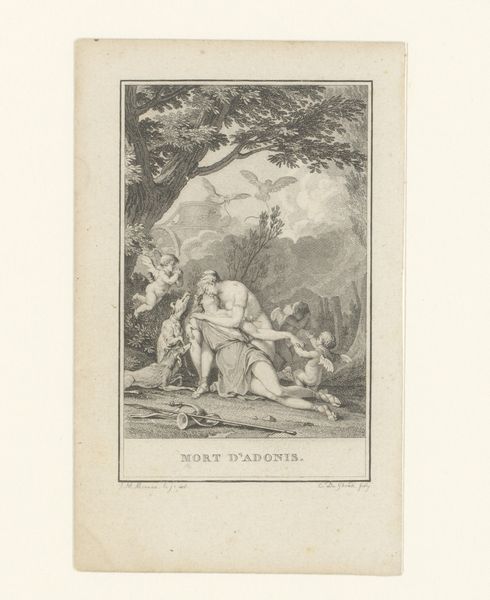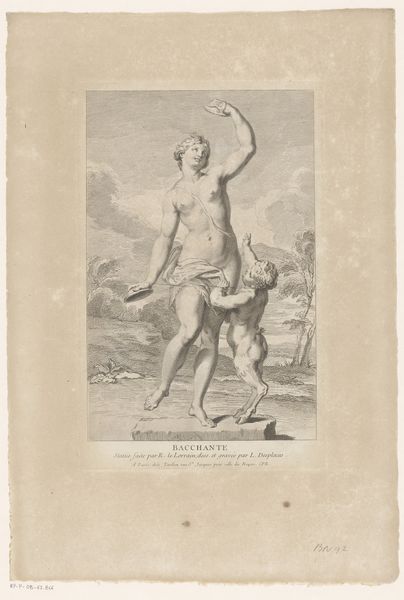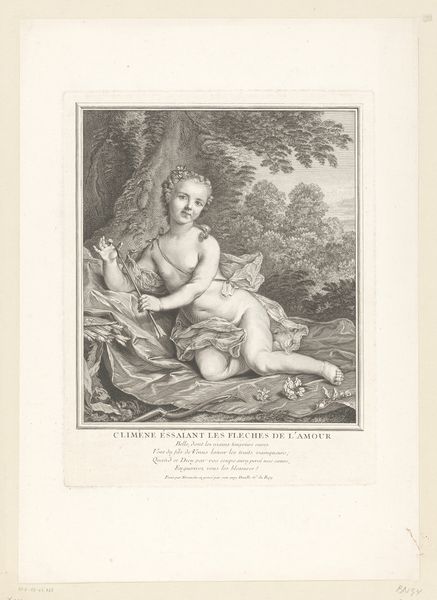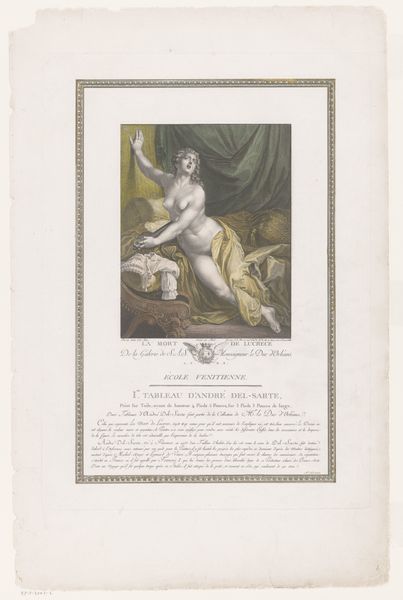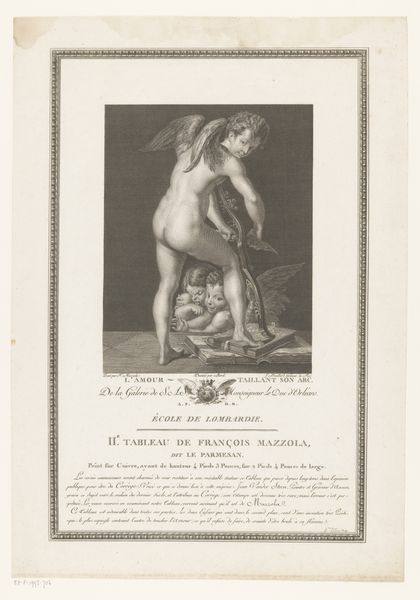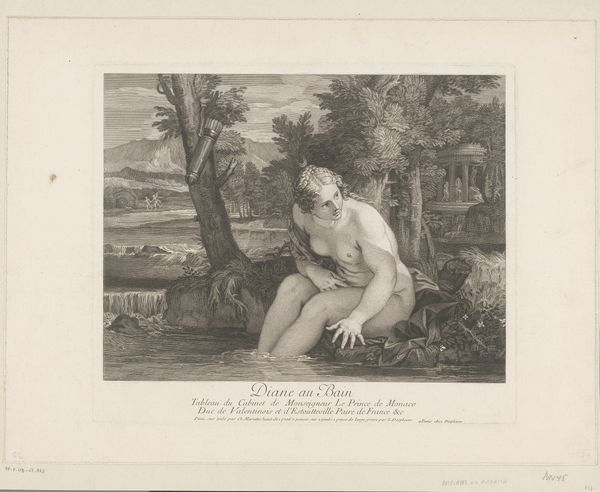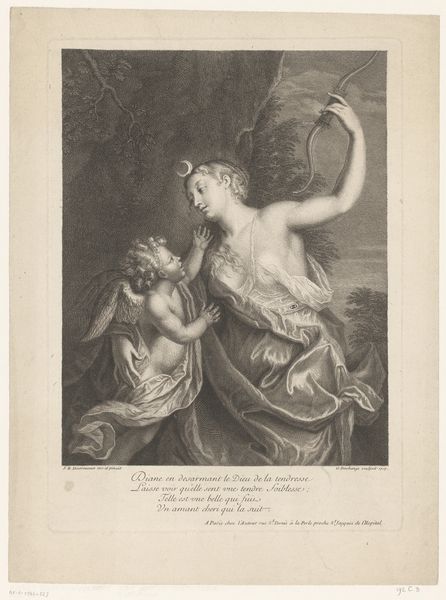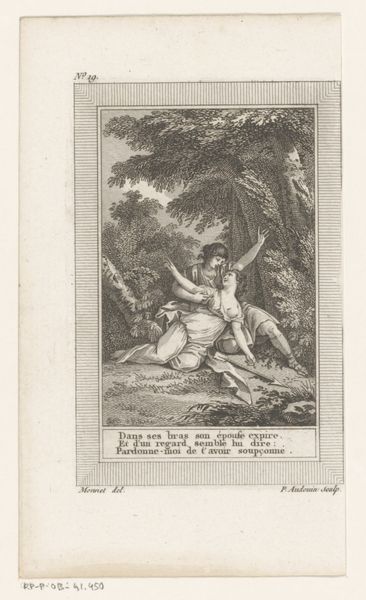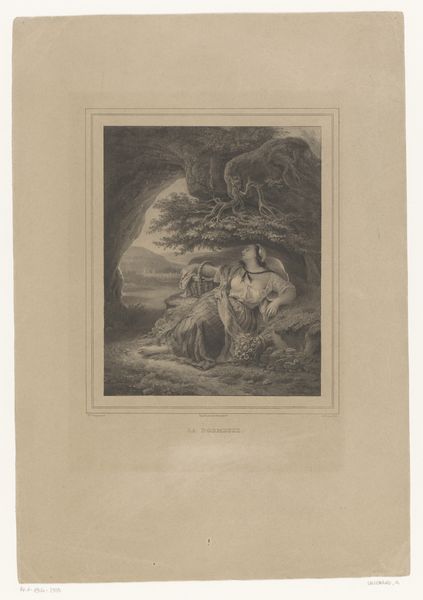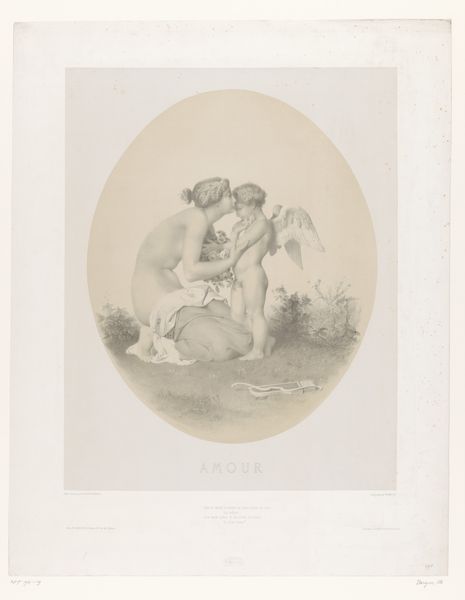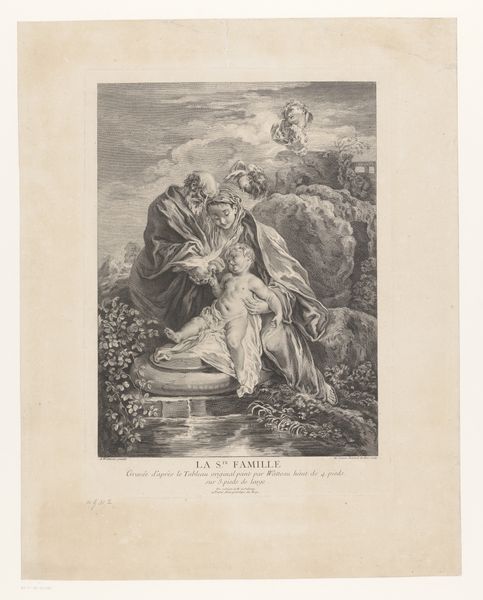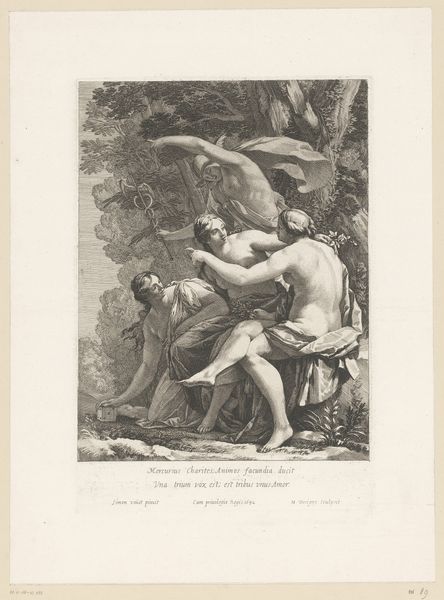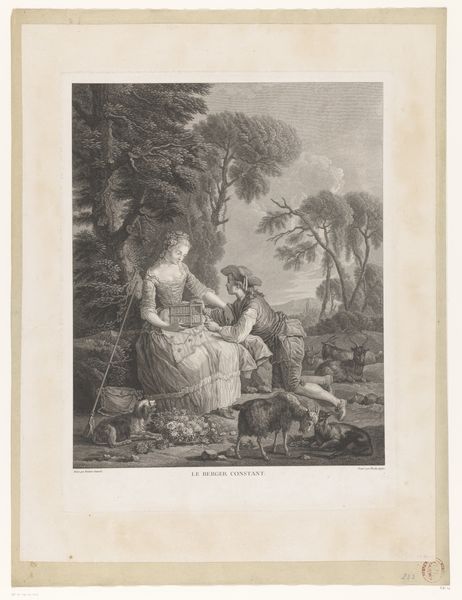
print, engraving
#
allegory
# print
#
landscape
#
figuration
#
romanticism
#
history-painting
#
engraving
Dimensions: height 382 mm, width 300 mm
Copyright: Rijks Museum: Open Domain
Curator: This engraving, titled "Lachende Amor met een beeld van Minerva," which translates to "Laughing Cupid with a Statue of Minerva," dates back to around 1825 and is by A. Bosselman. Editor: Well, that's adorable and a little cheeky! A pudgy cupid, practically glowing, amidst a somber landscape. It's like innocence stumbled into a philosophical debate and decided to liven things up. Curator: It certainly presents an intriguing juxtaposition. Romanticism loved exploring these kinds of allegorical pairings. The Cupid, of course, representing love, is seen holding the figure of Minerva, the Roman goddess of wisdom and strategic warfare. Editor: Yes, the details on Minerva's statue look fantastic, especially considering the small size. She looks surprisingly stern in comparison to our happy-go-lucky cupid. There is almost something unsettling to her unwavering expression. I mean, this could represent a critique of power? Curator: Potentially. In Bosselman's era, there was often a pointed interest in revisiting classical allegories. The intention might be less about undermining authority and more about engaging in dialogue, a conversation, if you will, about where the true strengths of society lie. Where does power originate from, and where is it going? The cupid may simply mean the wisdom and strategy must be coupled with the innocence and joy in order to prosper. Editor: Perhaps… or is that innocent glee suggesting that love, or at least the pursuit of it, often undermines even the most strategic of plans? Maybe love and joy aren't complementary, maybe love is an agent of entropy. It would be hard to argue that joy ever makes a good strategic choice. Curator: You see the inherent challenge that lies in attempting to stabilize a republic through moral imagery; everyone interprets the symbology differently. Even Bosselman does not share much insight into their motivations behind choosing these particular metaphors and allegories. Editor: And perhaps that is intentional? But seriously, there’s such playfulness in that Cupid’s grin, the kind that makes you wonder if Minerva knows something we don't, if this Cupid just stole Minerva's lunch money and she just wants it back. Curator: That could very well be true! No one can know for sure. But thanks to works like this, we're able to witness how societies debated such questions of love and war, of power and authority. Editor: Absolutely. And sometimes, how they wrestled with whether or not somebody had their lunch money stolen!
Comments
No comments
Be the first to comment and join the conversation on the ultimate creative platform.
